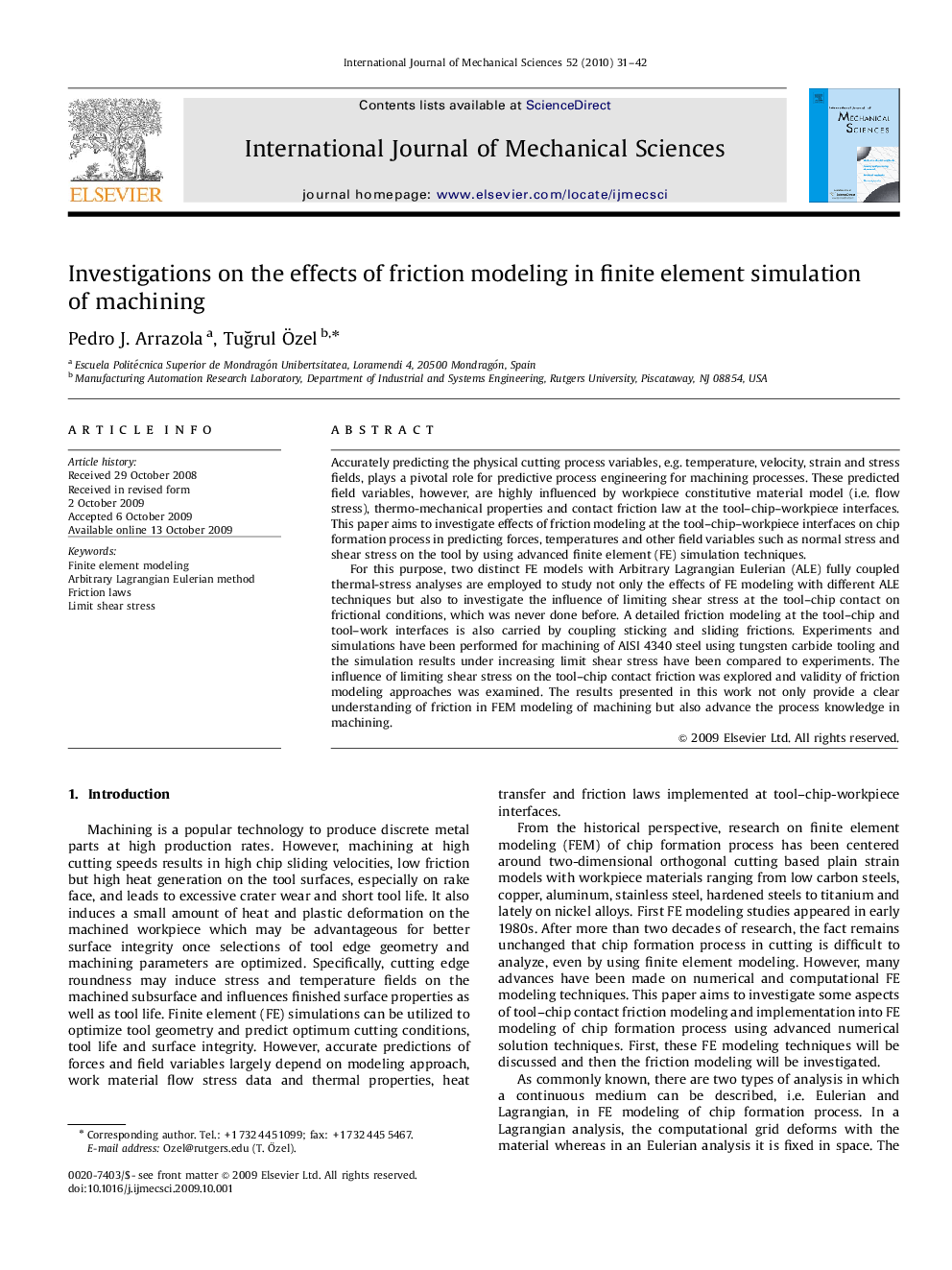| کد مقاله | کد نشریه | سال انتشار | مقاله انگلیسی | نسخه تمام متن |
|---|---|---|---|---|
| 786078 | 1465050 | 2010 | 12 صفحه PDF | دانلود رایگان |

Accurately predicting the physical cutting process variables, e.g. temperature, velocity, strain and stress fields, plays a pivotal role for predictive process engineering for machining processes. These predicted field variables, however, are highly influenced by workpiece constitutive material model (i.e. flow stress), thermo-mechanical properties and contact friction law at the tool–chip–workpiece interfaces. This paper aims to investigate effects of friction modeling at the tool–chip–workpiece interfaces on chip formation process in predicting forces, temperatures and other field variables such as normal stress and shear stress on the tool by using advanced finite element (FE) simulation techniques.For this purpose, two distinct FE models with Arbitrary Lagrangian Eulerian (ALE) fully coupled thermal-stress analyses are employed to study not only the effects of FE modeling with different ALE techniques but also to investigate the influence of limiting shear stress at the tool–chip contact on frictional conditions, which was never done before. A detailed friction modeling at the tool–chip and tool–work interfaces is also carried by coupling sticking and sliding frictions. Experiments and simulations have been performed for machining of AISI 4340 steel using tungsten carbide tooling and the simulation results under increasing limit shear stress have been compared to experiments. The influence of limiting shear stress on the tool–chip contact friction was explored and validity of friction modeling approaches was examined. The results presented in this work not only provide a clear understanding of friction in FEM modeling of machining but also advance the process knowledge in machining.
Journal: International Journal of Mechanical Sciences - Volume 52, Issue 1, January 2010, Pages 31–42